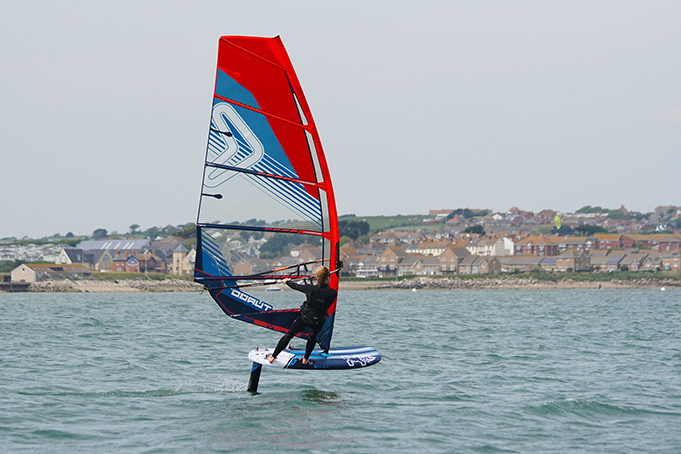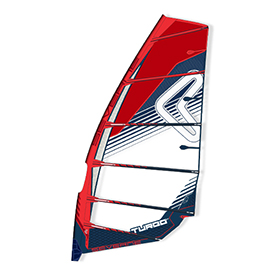
SEVERNE TURBO GT 7.5M 2019 TEST REVIEW
SEVERNE TURBO GT 7.5M 2019 TEST REVIEW
THEY SAY
All cams are positioned below the boom to lock the power zone very low in the sail where it can most easily be controlled. Swing weight is also improved by lowering all the hardware and allowing the upper sections to flex and exhaust freely.
WE SAY
The Turbo GT is Severne’s cammed freeride sail, incorporating a single cam in the three smaller sizes, before switching to twin in 7.0m and above. Capable of being used with an RDM or SDM, it was tested here on an Apex SDM, deemed to provide better stability. It rigs conventionally, the cams popping on effortlessly without the need to apply outhaul, whilst the leech falls away progressively as more downhaul is applied. Setting cleanly, the Turbo GT displays a moderate profile, located well forward in the draft, the luff sleeve being one of the narrowest in the group. The main panels of the sail are predominantly monofilm, complimented with a Kevlar x-ply luff panel to mitigate any vertical stretch, yet provide horizontal elasticity. There’s the brand’s much loved eM4 x-ply in the foot panel for improved durability, and tube battens used within the sail’s structure for enhanced stability and performance. With seamless head and foot panels and Spiderfibre used along the leech’s perimeter to improve strength, the GT is well considered and detailed, as you’d expect from the Severne loft.
Set for light airs, with minimal tension on the downhaul, the mid-leech tightens to provide maximum pumping response. And boy, does it work well! The sail’s relatively upright luff curve, combined with the stretch afforded by the Kevlar luff panel turns the GT into somewhat of a secret weapon in marginal conditions. And since the two cams are located below the boom, the sail seems to hinge and breath much more easily above the boom, punching the board forwards with every pumping cycle. Accelerating quickly, it feels wonderfully light and precise in the hands, more akin to a 6.0m than a 7.5m, which leads us to a top tip when using the GT. Because the centre of effort is locked so far forward in the draft, and the inset clew eyelet means the boom is so short, it is easy to get carried away in the marginal winds and over-sheet the sail once going, undoing all the hard work you initially put in, in releasing the board from the water. So once going, stand upright, be subtle and let the sail breathe away from you.
As conditions increase, the GT can be fine tuned through its broad tuning range to increase the twist in the sail and explore its performance range. Fast and efficient on all points of sail, it is just so light and crisp in the hands, accelerating instinctively in gusts without any need or demand placed on the rider. In transition the cams glide effortlessly round to the new tack without any punch or jolt to upset the rider’s stance – the forward facing power helping to keep the board driving through the turn. A useful asset in conventional windsurfing, it is also a real virtue in windfoiling, pulling the rig forward through the turn, the soft rotation helping to keep things settled at the most critical part of the gybe.
Other sails in this test:

